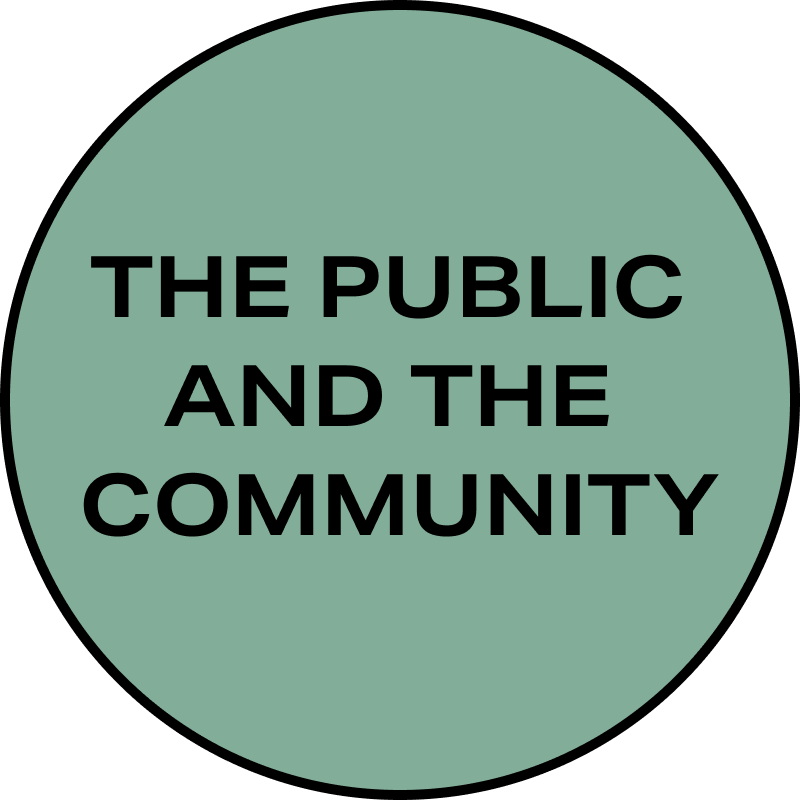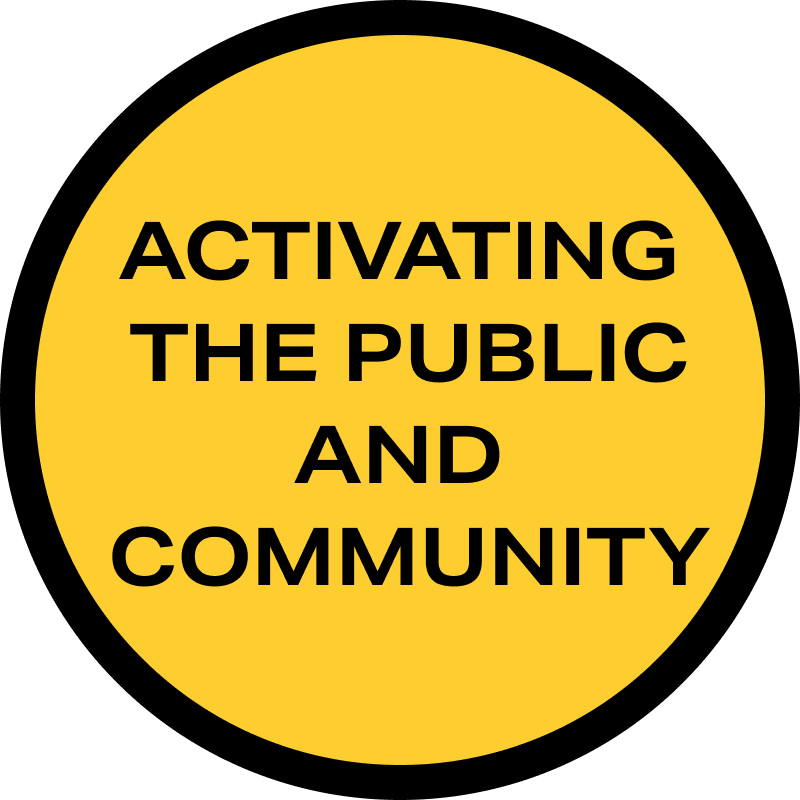
WHAT IS CIVIC MEDIA?
ACTIVATING THE PUBLIC AND COMMUNITY
For many fellows, civic media is more than just producing media for the public or community. Civic media impacts its audience and catalyzes action. Sydette Harry, who describes herself as a “cultural questioner,” reflected that civic media is “taking the skills and the opportunities and the privileges and the talents that I have, and bringing them back to the community in ways that let my community explore for themselves.” The intended impact of her work, then, is that her audience and community engage in an active process of exploration.
What the community is activated to do can vary. In some cases, like in the work of journalist Mari Mari Narváez, the activation of the community can take more traditional political forms such as moving people to protest on the street and demand change from elected officials. For Mari, civic media is “the mediums that we use as citizens to advocate. To advocate for the change that we want to see in our societies.” Her work of investigating and documenting state violence in Puerto Rico aims to mobilize advocacy to shift the norms and actions of political entities like the government and police force. In other contexts, however, civic media can motivate people to be more engaged in the daily lives of their local community. For storyteller and political content strategist Amber J. Phillips, “civic media is creating media with the intention of causing people to take action somewhere in their lives to make themselves or the communities that they exist in better than how they found them.” Her definition of civic media is influenced by the example of her grandmother. She reflected:
[My grandmother] was highly involved in our church. She worked in our food pantry. She just gave to people. She made her block better. Any place that she was a part of, any community that she was a part of became better because she was a part of it. And I want everyone to do that. I want you to see the impact you can have in your church or your school or even just within a group of fellows or a classroom of folks. That you can participate to make that society a bit better than how it was, or to make it more expansive and to be a home or safe place for people who aren't just you. So that's what I think civic media does: it helps to add to people's worldviews and to get them to see how they can participate in making those worldviews a reality.
Activating the community can also take the form of provoking a conversation rather than specific actions. For documentary filmmaker and immersive media creator Sue Ding, civic media is best defined by the media producer’s intentions to engage people in a dialogue:
I think civic media can be anything. Even if you look at what the fellows are doing, the kinds of things that we're doing, the kinds of stories we're interested, the kind of work that we do – it's so broad. And so I think, for me, it's almost more about intention.
Rather than categorizing certain forms or types of media as ‘civic’ and excluding others, Sue suggested that even if someone is creating a product that will have a “finished version,” the key for civic media is “seeing that as a kind of instigator of this longer process of exchanging information, having discussions, building some sort of network around it or building some sort of conversation around it.” The core question, for her, is “what are people doing afterwards?”
Click on the buttons below to explore some aspects of Civic Media!





